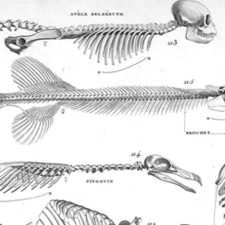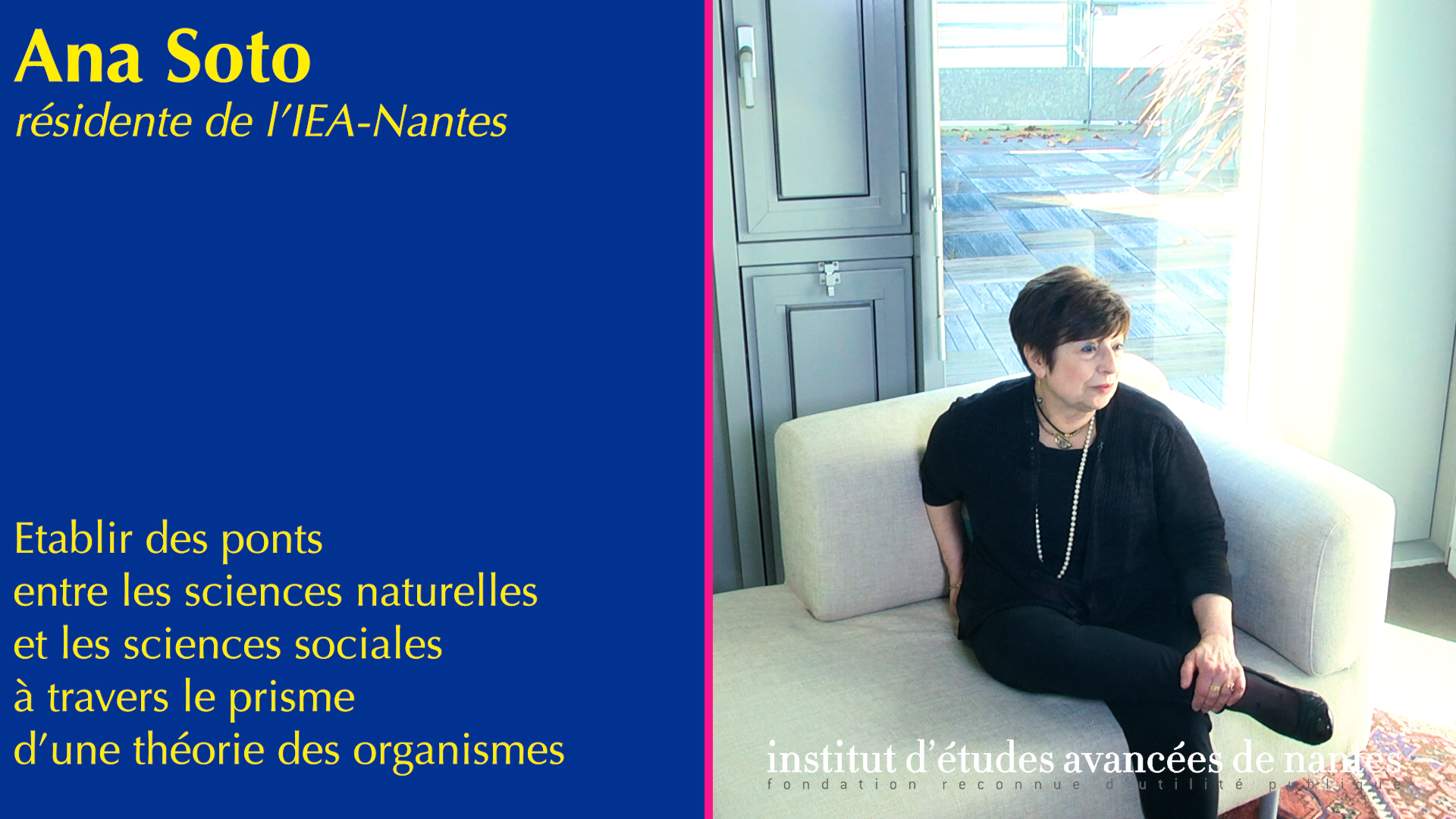Chapitres
Notice
From Biology to Biosemiotics
- document 1 document 2 document 3
- niveau 1 niveau 2 niveau 3
Descriptif
Kalevi KULL is one of the leading figures in Biosemiotics nowadays. He is professor in the Department of Semiotics at the famous Tartu University, Estonia. His current interests are the Theory of evolution, the Theory of plant communities and species co-existence and also Theoretical biology (and its history). If you want to know more on these research subjects, visit the web site of Kalevi Kull : http://www.zbi.ee/~kalevi/
Intervention / Responsable scientifique
Thème
Documentation
Bibliographie
Books
Sutrop U., Kull K. 1985. Theoretical Biology in Estonia. Tallinn: Valgus, 28 p.Kull K., Kull O. 1989. Dinamicheskoe modelirovanie rosta derev'ev [Dynamical Modelling of Tree Growth]. Tallinn, Valgus, 232 p.
Kukk T., Kull K. 1997. Puisniidud [Wooded Meadows]. (Estonia Maritima 2.) 249 p.
Emmeche Claus, Kull K., Stjernfelt Frederik 2002. Reading Hoffmeyer, Rethinking Biology. Tartu: Tartu University Press.
Books, edited
Kull K., Tiivel T. (eds.) 1988. Lectures in Theoretical Biology. Tallinn: Valgus. 180 p.Kull K., Ksenofontova T. (eds.) 1988. Perspektivy teorii fitotsenologii [Perspectives in Theory of Phytocoenology]. Tartu, 208 p.
Kull K. (ed.) 1992. Baer and Modern Biology. Tartu: University of Tartu. 104 p.
Kull K., Tiivel T. (eds.) 1993. Lectures in Theoretical Biology: The Second Stage. Tallinn: Estonian Academy of Sciences. 257 p. (Academia, vol. 2).
Zobel M, Palmer M.W., Kull K., Herben T. (eds.) 1994. Species Co-existence and Vegetation Structure. Uppsala: Opulus Press, 112 p.
Aaviksoo K., Kull K., Paal J., Trass H. (eds.). 1995. Consortium Masingii: A Festschrift for Viktor Masing. (Scripta Botanica 9.) Tartu: Tartu University, 189 p.
Tiivel T., Kareva D., Kull K. (eds.) 2000. Oma maa vaim: Eesti Taassünni auhind 1993-1997 [The Spirit of One's Own Country: Estonian Renaissance Award 1993-1997]. Tallinn: Varrak, 79 p.
Roepstorff Andreas, Bubandt Nils, Kull Kalevi (eds.) 2003. Imagining Nature: Practices of Cosmology and Identity.. Aarhus: Aarhus University Press.
Journals and book series, edited
Sign Systems Studies (since vol. 26, 1998)Schola Biotheoretica
Folia Baeriana (since vol. 7, 1999)
Articles
(in English)Kallis A., Kull K. 1977. Changes in the components of dark respiration during the growing period and their relationship with the growth of barley plants. - In: Produkce biomasy a tvorba vynosu polnich plodin. Praha: Agroprojekt, 81-90.
Laisk A., Oja V., Kull K. 1980. Statistical distribution of stomatal apertures of Vicia faba and Hordeum vulgare and the spannungsphase of stomatal opening. - Journal of Experimental Botany 31(120), 49-58.
Kull K. 1987. Ecophysiological models of tree growth. - In: Laasimer L., Kull T. (eds.). The Plant Cover of the Estonian SSR: Flora, Vegetation and Ecology. Tallinn: Valgus, 96-107.
Kull K. 1988. The origin of species: a new view. - In: Kull K., Tiivel T. (eds.). Lectures in Theoretical Biology. Tallinn: Valgus, 73-77.
Kull T., Kull K. 1991. Preliminary results from a study of populations of Cypripedium calceolus in Estonia. - In: Wells T.C.E., Willems J.H. (eds.). Population Ecology of Terrestrial Orchids. The Hague: SPB Academic Publ., 69-76.
Kull K., Zobel M. 1991. High species richness in an Estonian wooded meadow. - Journal of Vegetation Science 2(5), 715-718.
Kull K. 1992. Evolution and semiotics. - In: Sebeok T.A., Umiker-Sebeok J. (eds.). Biosemiotics: Semiotic Web 1991. Berlin: Mouton de Gruyter, 221-233.
Kull K. 1993. Baer and theoretical biology in Estonia. - Folia Baeriana, 6. Tartu, 22-26.
Kull K. 1993. Recognition concept of species and a mechanism of speciation. - In: Folia Baeriana 6. Tartu, 133-140.
Kull K. 1993. Semiotic paradigm in theoretical biology. - In: Kull K., Tiivel T. (eds.). Lectures in theoretical biology: the second stage. Tallinn: Estonian Academy of Sciences, 52-62. (Academia; vol. 2).
Kull K., Zobel M. 1994. Vegetation structure and species co-existence. - Folia Geobotanica et Phytotaxonomica, 29, 433-437.
Niinemets Ü., Kull K. 1994. Leaf weight per area and leaf size of 85 Estonian woody species in relation to shade tolerance and light availability. - Forest Ecology and Management 70(1), 1-10.
Kull K. 1995. Growth form parameters of clonal herbs. - Scripta Botanica 9, 106-115.
Masing V., Kull K., Trass H., Zobel M. 1995. Vegetation science in Estonia. - Scripta Botanica 9, 144-189.
Brauckmann S., Kull K. 1997. Nomogenetic biology and its Western counterparts. - In: Naumov R.V., Marasov A.N., Gurkin V.A. (eds.). Lyubischevskie Chteniya 1997. Ul'yanovsk: Ul'yanovskij gosudarstvennyj pedagogicheskij universitet, 72-77.
Ingerpuu N., Kull K., Vellak K. 1998. Bryophyte vegetation in a wooded meadow: relationships with phanerogam diversity and responses to fertilisation. - Plant Ecology 134(2), 163-171.
Kull K. 1998. On semiosis, Umwelt, and semiosphere. - Semiotica 120(3/4), 299-310.
Kull K. 1998. Organism as a self-reading text: anticipation and semiosis. - International Journal of Computing Anticipatory Systems 1, 93-104.
Kull K. 1998. Baerian biology: evolution by means of organisms' interpretation. - In: Farré George L., Oksala Tarkko (eds.). Emergence, Complexity, Hierarchy, Organization. Espoo, 197-200.
Kull K. 1998. Semiotic ecology: different natures in the semiosphere. - Sign Systems Studies 26, 344-371.
Kull K. 1999. Outlines for a post-Darwinian biology. - Folia Baeriana 7, 129-142.
Kull K. 1999. On the history of joining bio with semio: F.S.Rothschild and the biosemiotic rules. - Sign Systems Studies 27, 128-138.
Kull K. 1999. Umwelt and evolution: from Uexküll to post-Darwinism. - In: Taborsky E. (ed.). Semiosis, Evolution, Energy: Towards a Reconceptualization of the Sign. Aachen: Shaker Verlag, 53-70.
Kull K. 1999. Symbiosis is semiosis. - In: Wagner E., et al. (eds.). From Symbiosis to Eukaryotism: Endocytobiology 7. Geneva University Press, 663-668.
Tiivel T., Kull K. 1999. Thure von Uexküll: symbiosis of biology, medicine, and semiotics. - In: Wagner E., et al. (eds.). From Symbiosis to Eukaryotism: Endocytobiology 7. Geneva University Press, 657-661.
Kull K. 1999. Towards biosemiotics with Yuri Lotman. - Semiotica 127(1/4), 115-131.
Kull K. 1999. Biosemiotics in the twentieth century: a view from biology. - Semiotica 127(1/4), 385-414.
Kull K. 2000. Active motion, communicative aggregations, and the spatial closure of Umwelt - Annals of the New York Academy of Sciences 901, 272-279.
Sammul M., Kull K., Oksanen L., Veromann P. 2000. Competition intensity and its importance: results of field experiments with Anthoxanthum odoratum. - Oecologia 125(1), 18-25.
Kull K. 2000. Organisms can be proud to have been their own designers. - Cybernetics and Human Knowing 7(1), 45-55.
Kull K. 2000. Copy versus translate, meme versus sign: development of biological textuality - European Journal for Semiotic Studies 12(1), 101-120.
Kull K. 2000. An introduction to phytosemiotics: Semiotic botany and vegetative sign systems. - Sign Systems Studies 28: 326-350.
Kull K., Torop Peeter 2000. Biotranslation: Translation between umwelten. In: Petrilli, Susan (ed.), Tra Segni. (= Athanor: Semiotica, Filosofia, Arte, Letteratura. Anno XI, nuova serie 3) Roma: Meltemi editore, 33-43.
Kull K. 2000. Trends in theoretical biology: The 20th century. - Aquinas 43(2), 235-249.
Kull K. 2001. Biosemiotics and the problem of intrinsic value of nature. - Sign Systems Studies 29(1): 353-365.
Kull K. 2001. Jakob von Uexküll: An introduction. - Semiotica 134(1/4): 1-59.
Kull K. 2001. Living forms are communicative structures, based on the organic codes. - Cybernetics and Human Knowing 8(3): 91-94.
Sur le même thème
-
L'unité de plan et de composition. La controverse de 1830 et ses retentissements
GrimoultCédricNouvelle conférence dans le cadre du programme de recherche Biohumanities de Gisèle Séginger, avec Cédric Grimoult.
-
Yves-Marie Allain : Sociétés savantes, pratiques naturalistes et nature en ville (XIXe-XXIe siècles)
AllainYves-MarieYves MarieAllain : Sociétés savantes, pratiques naturalistes et nature en ville (XIXe-XXIe siècles) Journée d'étude | Programme Biohumanities | Vendredi 22 octobre Nouvelle journée d'étude dans le
-
Louise Couëffé : Sociétés savantes, pratiques naturalistes et nature en ville (XIXe-XXIe siècles)
CouëfféLouiseSociétés savantes, pratiques naturalistes et nature en ville (XIXe-XXIe siècles) Journée d'étude | Programme Biohumanities | Vendredi 22 octobre Nouvelle journée d'étude dans le cadre du programme
-
Patrick Matagne, Sociétés savantes, pratiques naturalistes et nature en ville (XIXe-XXIe siècles)
MatagnePatrickSociétés savantes, pratiques naturalistes et nature en ville (XIXe-XXIe siècles) Journée d'étude | Programme Biohumanities | Vendredi 22 octobre Nouvelle journée d'étude dans le cadre du programme
-
Jerome Tabouelle, Sociétés savantes, pratiques naturalistes et nature en ville (XIXe-XXIe siècles)
TabouelleJérômeSociétés savantes, pratiques naturalistes et nature en ville (XIXe-XXIe siècles) Journée d'étude | Programme Biohumanities | Vendredi 22 octobre Nouvelle journée d'étude dans le cadre du programme
-
Guillaume Bagnolini, Sociétés savantes, pratiques naturalistes et nature en ville (XIXe-XXIe siècle…
BagnoliniGuillaumeSociétés savantes, pratiques naturalistes et nature en ville (XIXe-XXIe siècles) Journée d'étude | Programme Biohumanities | Vendredi 22 octobre Nouvelle journée d'étude dans le cadre du programme
-
Bénédicte Percheron : Sociétés savantes, pratiques naturalistes et nature en ville (XIXe-XXIe siècl…
PercheronBénédicteSociétés savantes, pratiques naturalistes et nature en ville (XIXe-XXIe siècles)
-
Nathalie Machon : Sociétés savantes, pratiques naturalistes et nature en ville (XIXe-XXIe siècles)
MachonNathalieSociétés savantes, Pratiques naturalistes et nature en ville (XIXe-XXIe siècles) Programme Biohumanities | Vendredi 22 octobre | Nouvelle journée d'étude dans le cadre du programme de recherche
-
Charles François Mathis : Sociétés savantes, pratiques naturalistes et nature en ville (XIXe-XXIe s…
MathisCharles-FrançoisSociétés savantes, Pratiques naturalistes et nature en ville (XIXe-XXIe siècles) Programme Biohumanities | Vendredi 22 octobre | Nouvelle journée d'étude dans le cadre du programme de recherche
-
#185 - Ana Soto - Établir des ponts entre les sciences naturelles et les sciences sociales à traver…
Les théories organisent la connaissance et construisent l’objectivité en encadrant les observations et les expériences.
-
Penser le vivant
SégingerGisèleGisèle Séginger, co-directrice de l'ouvrage "Penser le vivant", avec Laurence Dahan-Gaida, Christine Maillard et Laurence Talairach-Vielmas. Elle nous parle de ce livre paru aux Editions de la MSH en
-
Annual social science lecture, the social sciences in a biological age
RoseNikolasIl existe toujours une résistance à la perception des humains en tant que simples animaux biologiques, produits par l’interaction avec leur environnement. La compréhension des mécanismes biologiques














